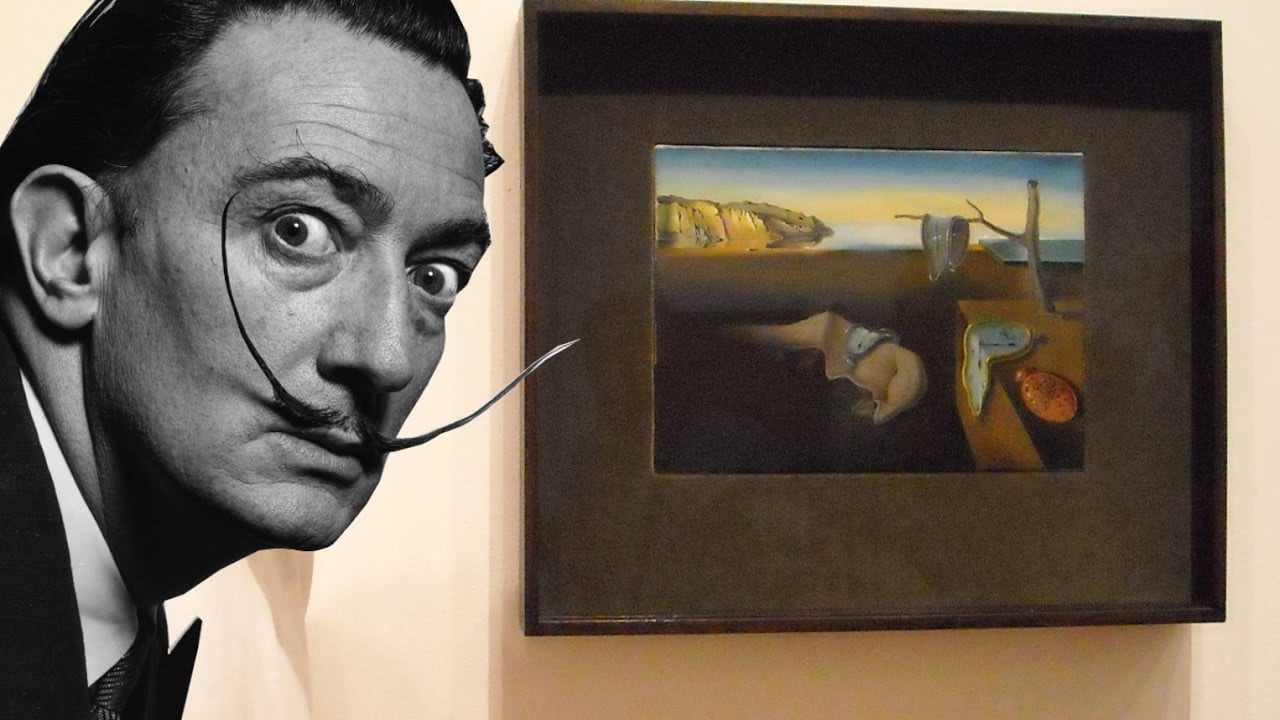Modern Art
10 Most Famous Paintings by Salvador Dali
Salvador Dalí was a very famous artist who painted Most Famous Paintings that looked very strange and dreamlike. He was from Spain and his paintings are known for showing things in a way that’s not quite real. Some of his paintings have melting clocks or elephants with long legs. People all over the world love his paintings because they make them think about things in new and interesting ways.
In this article, we’ll talk about the 10 most famous paintings by Salvador Dali. Each painting is like a window into Dali’s mind, showing us what he thought about and how he saw the world. Even though his paintings can seem strange, they are full of meaning and make us feel curious about the mysteries of life. So, let’s take a closer look at these amazing artworks and see what makes them so special!
1. The Persistence of Memory (1931):
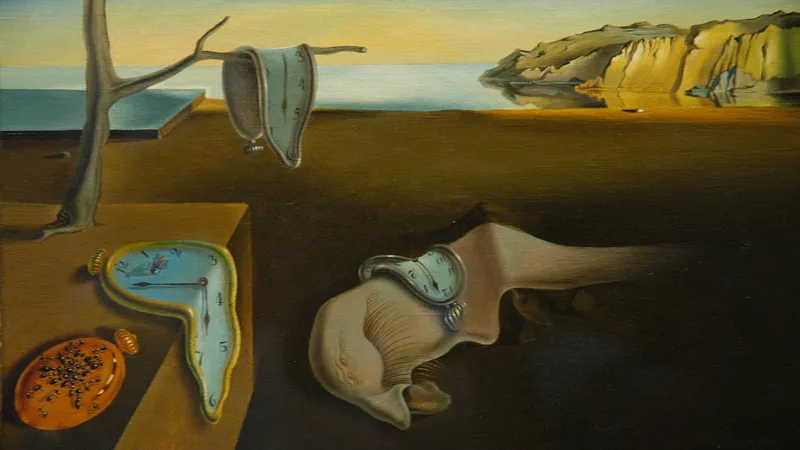
Context: Created during Dalí’s surrealist period, “The Persistence of Memory” is often interpreted as a reflection on the relativity of time and the subconscious mind.
Symbolism: The melting clocks symbolize the fluidity of time and the distortion of memory. The barren landscape suggests a sense of desolation and existential angst.
Artistic Technique: Dalí used a meticulous technique called “paranoiac-critical method” to create this dreamlike scene, emphasizing meticulous detail and precise rendering.
2. The Elephants (1948):

Context: “The Elephants” reflects Dalí’s fascination with Freudian psychology and the symbolism of elephants in his personal mythology.
Symbolism: The elongated elephants with spindly legs represent the weight of the world and the burden of existence. The obelisks on their backs allude to ancient civilizations and the passage of time.
Artistic Technique: Dalí employed precise draftsmanship and meticulous attention to detail to create the intricate forms of the elephants, imbuing them with a sense of surrealism and mystery.
3. Swans Reflecting Elephants (1937):
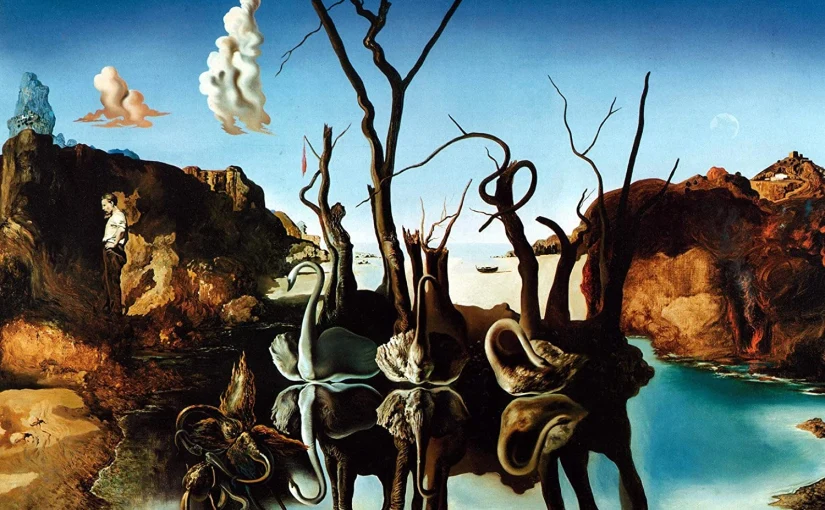
Context: This painting explores Dalí’s interest in optical illusions and the subconscious mind’s ability to perceive multiple realities.
Symbolism: The swans symbolize purity and transformation, while the elephants represent memory and the subconscious. The reflection underscores the duality of existence and the fluid nature of perception.
Artistic Technique: Dalí employed precise brushwork and careful composition to create the illusion of reflection, challenging viewers to reconsider their perceptions of reality.
4. The Sacrament of the Last Supper (1955):
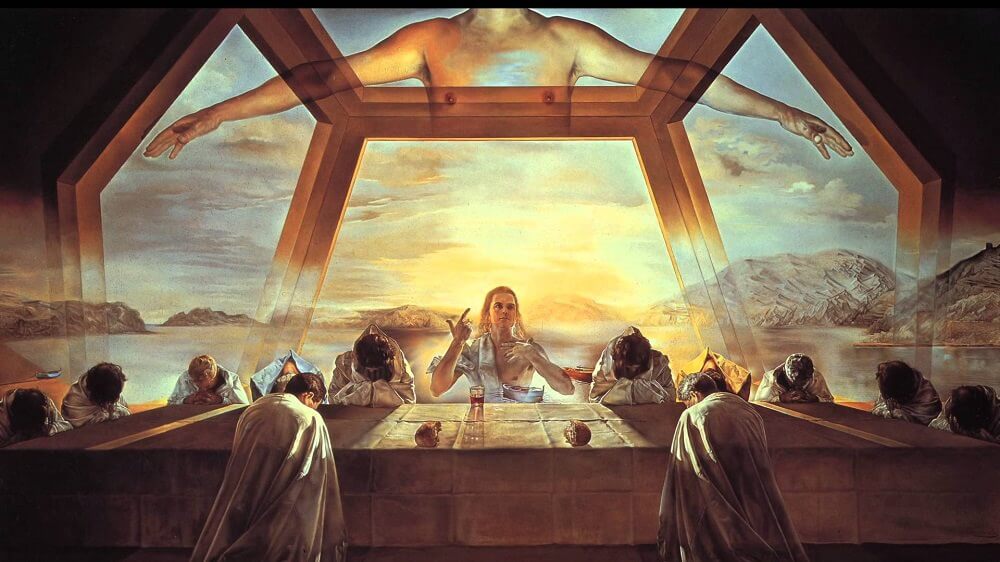
Context: Dalí’s interpretation of the Last Supper combines religious iconography with his surrealistic style, inviting viewers to contemplate the mysteries of faith and existence.
Symbolism: The crumbling walls and ghostly figures evoke a sense of decay and transcendence. Each element, from the floating fish to the distorted figures, carries symbolic weight and theological significance.
Artistic Technique: Dalí employed a combination of traditional oil painting techniques and his unique surrealist vision to create this haunting depiction of the biblical scene.
5. Galatea of the Spheres (1952):
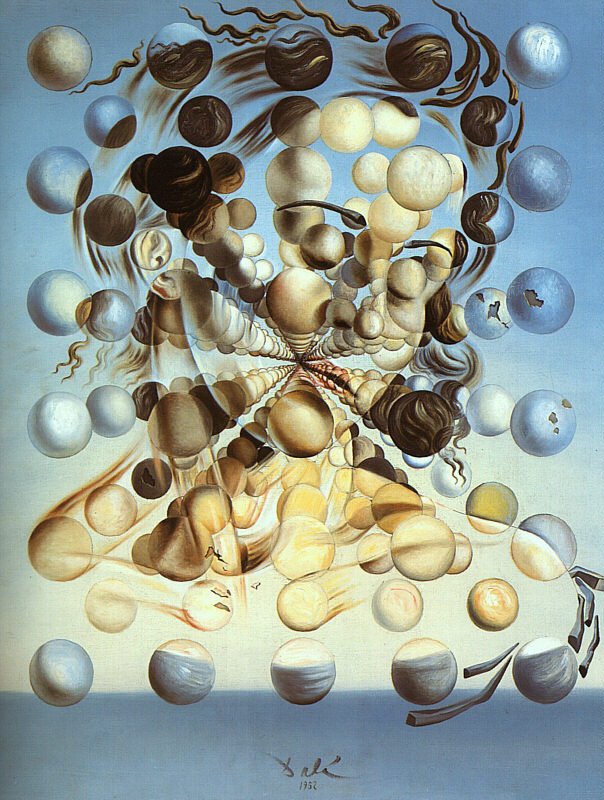
Context: Named after the mythical figure Galatea, this painting celebrates the divine beauty and harmony of the cosmos.
Symbolism: Gala, Dalí’s wife and muse, is depicted surrounded by floating spheres, symbolizing the celestial bodies and the interconnectedness of all things. The composition suggests a sense of cosmic unity and transcendence.
Artistic Technique: Dalí employed a meticulous rendering technique, using precise brushwork and vibrant colors to create the illusion of depth and movement within the painting.
6. Christ of Saint John of the Cross (1951):

Context: Dalí’s unique perspective on the crucifixion challenges traditional religious imagery and invites viewers to contemplate the divine from a new angle.
Symbolism: Christ is depicted suspended in the sky, his outstretched arms forming a perfect triangle. The composition suggests a sense of divine geometry and spiritual transcendence.
Artistic Technique: Dalí employed a combination of traditional oil painting techniques and precise draftsmanship to create this striking depiction of the crucifixion, emphasizing the surreal juxtaposition of the divine and the earthly.
7. The Great Masturbator (1929):

Context: This painting reflects Dalí’s fascination with Freudian psychoanalysis and his exploration of the subconscious mind.
Symbolism: The central figure, with its distorted features and provocative pose, represents Dalí’s inner turmoil and sexual anxiety. The landscape, with its barren rocks and ominous clouds, underscores the psychological tension of the scene.
Artistic Technique: Dalí employed a combination of precise draftsmanship and bold, expressive brushwork to create the surreal atmosphere of the painting, emphasizing the psychological intensity of the subject matter.
8. Dream Caused by the Flight of a Bee Around a Pomegranate a Second Before Awakening (1944):

Context: The title of this painting suggests a narrative of dreamlike symbolism and subconscious association.
Symbolism: The various elements of the painting, including the floating figures and the fragmented landscape, evoke a sense of disorientation and flux. The pomegranate, a symbol of fertility and abundance, adds a layer of symbolic richness to the composition.
Artistic Technique: Dalí employed meticulous attention to detail and bold, expressive brushwork to create the surreal atmosphere of the painting, emphasizing the psychological intensity of the subject matter.
9. The Temptation of Saint Anthony (1946):

Context: Inspired by the trials faced by the third-century Christian hermit, this painting explores themes of temptation, desire, and spiritual struggle.
Symbolism: The grotesque and surreal temptations that surround Saint Anthony represent the various trials and temptations faced by humanity. The landscape, with its barren rocks and swirling clouds, evokes a sense of spiritual turmoil and existential angst.
Artistic Technique: Dalí utilized a combination of precise draftsmanship and bold, expressive brushwork to create the surreal atmosphere of the painting, emphasizing the psychological intensity of the subject matter.
10. The Enigma of Desire (1929):
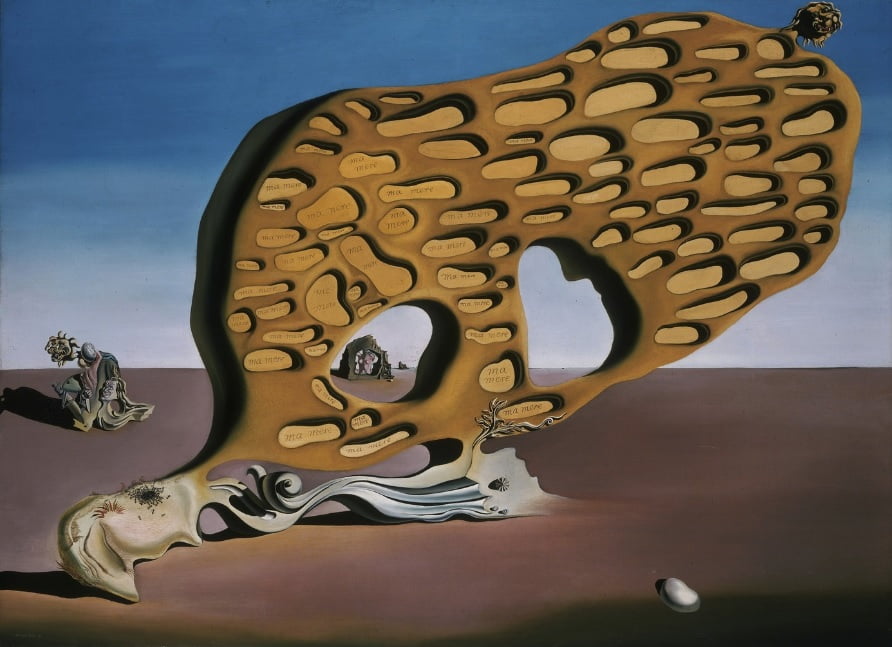
Context: This painting explores themes of passion, longing, and the mysteries of human desire.
Symbolism: The intertwined figures, with their merging forms and entangled limbs, represent the complex interplay of desire and intimacy. The barren landscape and ominous clouds add a sense of tension and unease to the scene.
Artistic Technique: Dalí employed meticulous attention to detail and bold, expressive brushwork to create the surreal atmosphere of the painting, emphasizing the psychological intensity of the subject matter.
Conclusion:
In conclusion, Salvador Dalí’s artistic legacy is one of unparalleled creativity, innovation, and imagination. Through his 10 most famous paintings, we have glimpsed into the surreal landscapes of his mind, where time melts, elephants roam, and dreams intertwine with reality. Dalí’s ability to evoke profound emotion and introspection through his art remains as potent today as it was during his lifetime.
As we reflect on the enduring impact of Dalí’s masterpieces, we are reminded of the power of art to transcend the boundaries of the physical world and tap into the depths of the human psyche. His paintings continue to inspire wonder, provoke thought, and ignite the imagination of viewers around the world. From the iconic “Persistence of Memory” to the enigmatic “Dream Caused by the Flight of a Bee Around a Pomegranate,” each work invites us to explore the mysteries of existence and contemplate the complexities of the human experience.
In the words of Salvador Dalí himself, “The only difference between me and a madman is that I am not mad.” Indeed, it is this fine line between madness and genius that defines the essence of Dalí’s artistry. As we bid farewell to this journey through the surreal, we are left with a profound appreciation for the enduring legacy of Salvador Dalí and the boundless possibilities of the human imagination.

